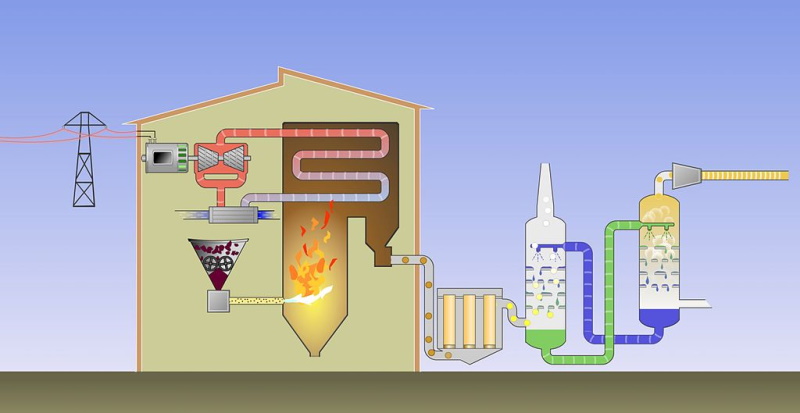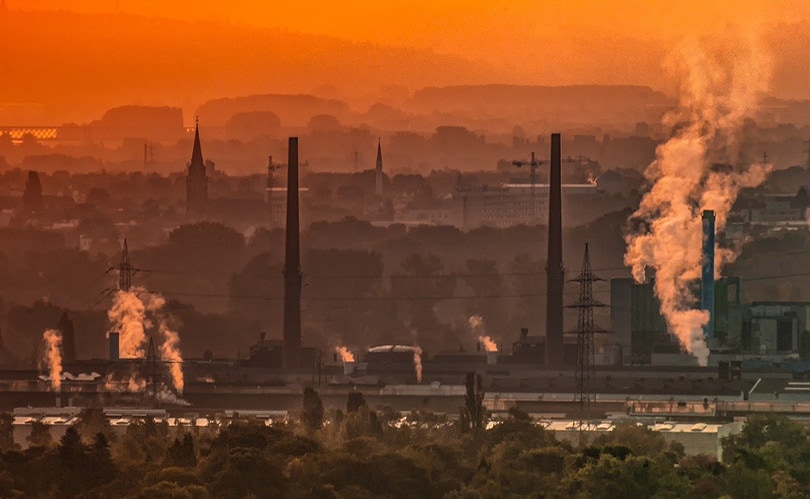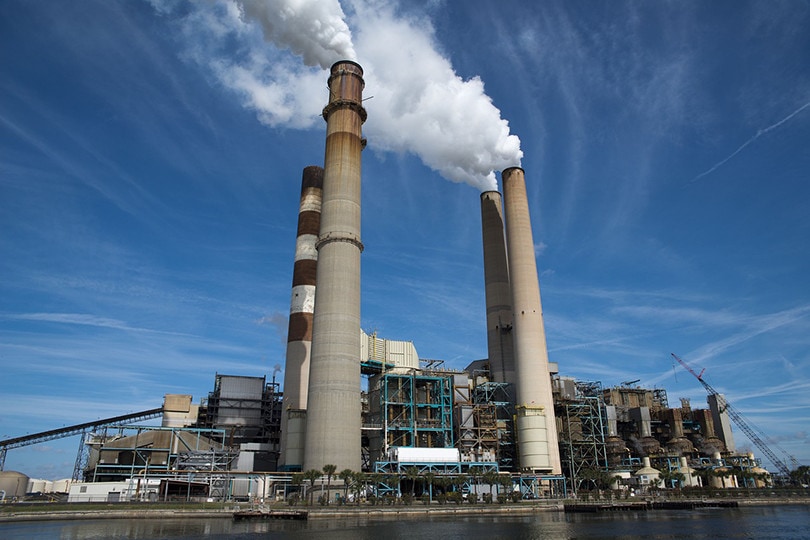How Does Carbon Capture Work? (With Infographic)
-
Pete Ortiz
- Last updated:

As the consequences of climate change rise, big industries must use technologies that can reduce greenhouse emissions. Carbon Capture and storage is one of the many technologies used to reduce global warming by helping remove CO2 released into the Earth’s atmosphere. This means that we may be able to prevent excess CO2 from entering the atmosphere, but carbon capture is a complex and underused solution.
Let’s have a look at this existing, as well as emerging technology, to understand how it works.
What is Carbon Capture and How Does It Work?
Carbon Capture and Storage reduces greenhouse gas emissions from sources, such as power plants, by transporting and storing them underground. Carbon capture can play a crucial role in combating climate change.
There are various technologies available to capture carbon that include some promising results as well as drawbacks.
Carbon Capture from a Point Source
Point source carbon capture is one of the oldest and most effective methods and captures the carbon straight from the source before it enters the atmosphere. It is also more cost-effective than capturing carbon that has already been released. After the fossil fuel is burned, CO2 is captured. When fossil fuels are burned, they emit flue gasses, which contain CO2, water vapor, nitrogen, and sulfur dioxide.
This method of carbon capture requires more energy, uses a lot of water, and the plants and factories that use it don’t run efficiently.

Direct Air Capture
Direct air capture is a technology that extracts carbon dioxide from the atmosphere using chemical reactions. When air passes over these chemicals, they selectively react with and trap CO2, allowing the rest of the air to pass through.
Because the carbon is so diluted, capturing CO2 from the open air is difficult.
Carbon Capture and Storage with Bioenergy
Carbon capture with Bioenergy is a method that allows the plants to do the work. Bioenergy is extracted from the organic matter, and carbon is captured from the atmosphere and reused or stored. The carbon in the organic matter comes from carbon dioxide, which it absorbs from the atmosphere as it grows.
What Is Done With Carbon After It Is Captured?
Once captured, CO2 can be used for a variety of purposes. It will most likely be stored underground in depleted oil and gas reservoirs, deep saline formations, and unmineable coal beds.
The CO2 needs to be transported to a storage facility, and a pipeline is the most common method of transporting CO2. In some cases, CO2 may travel as far as it can in the pipe before being transferred to a tanker truck, tanker ship, or pressurized cylinders to complete its journey. Pipelines can transport CO2 in three states: gaseous, liquid, and solid. Most pipelines transport CO2 in its gaseous state, which must first be compressed.
CO2 is injected artificially into underground geological formations beneath the Earth’s surface. Overlying rocks in these natural reservoirs form a seal, keeping the gas enclosed. Another option being considered is ocean carbon storage, but it is untested, and there are many worries about its effect on aquatic life and the possibility that carbon dioxide will eventually escape.
- It can be converted into synthetic fuels that can replace diesel, gasoline, and jet fuel.
- It can be pumped into greenhouses to help increase growth rates.
- It can be used to make plastics and chemicals.
- It can be used in the production of sparkling water.
Where Is Carbon Capture Happening?

Large amounts of carbon are produced by industrial facilities such as hydrogen plants, industrial facilities, cement plants, power plants, and oil and gas refineries. Engineers are developing technologies to increase the availability of carbon capture, and interest in developing carbon capture projects in the United States is growing.
Twenty-seven new projects have been announced so far in 2022. Six of the new projects were direct air capture projects, nine were industrial, seven were power plants, and five were storage projects.
Red Trail Energy’s carbon capture retrofit in North Dakota became operational this summer. This storage facility is 6,400 feet below ground and is surrounded by thick shale formations.
Competitive Power Ventures has announced the construction of a 1.8 GW natural gas combined cycle power plant in West Virginia with carbon capture. The project is estimated to have a capture rate of 90%–95% and generate 1,000 jobs.
The United States’ Shute Creek Gas Processing Plant is the world’s largest¹ operational carbon capture and storage facility.
Advantages of Carbon Capture
Carbon capture and storage technologies have the potential to significantly reduce carbon emissions, allowing power companies to continue producing reliable and affordable power using abundant and effective fossil fuels. When CO2 is pressurized into steam in CO2-based steam cycles, heat is transferred more efficiently and requires less energy, allowing power generation turbines to run more efficiently.
Captured CO2 could be used to fortify concrete, increasing the durability of infrastructure.
Technically, CO2 can be converted into fuel, which is advantageous in this industry. If more CCS operations are applied, skilled technicians will be required to manage them, resulting in more job opportunities.
What Are the Difficulties in Implementing Carbon Capture?
Equipping power plants with carbon capture technologies is very costly. Costs include electricity, infrastructure, transport, materials, and equipment.
Enhanced oil recovery is one current application of CO2 capture. Oil companies purchase the stored CO2 to inject into drained oil wells. The CO2 liberates the unreachable oil, but once it is burned, it will release more CO2 into the atmosphere. This seems to be replacing one problem with another unless the amount of carbon captured accounts for the CO2 released in this process.
There are also concerns about potential leaks and long-term storage capacity.
Frequently Asked Questions (FAQs)

Is Carbon Storage Safe?
For millions of years, oil, natural gas, and naturally occurring carbon dioxide emissions have been trapped and stored within underground environmental formations, demonstrating that CO2 can be stored for prolonged periods.
A process known as enhanced oil recovery, in which CO2 is injected underground to increase oil production, provides additional evidence that CO2 can be safely stored underground. On a large scale, commercial research in the USA has demonstrated its effective and safe storage.
Where Is CO2 Storage Taking Place Today Around The World?
CO2 storage is currently taking place in the United States and around the world. Large-scale commercial sites in Norway and Canada have successfully captured carbon, while additional efforts are underway in other countries such as China, Europe, and Australia. More than 200 CO2 capture and storage operations, both ongoing and complete, have been carried out worldwide to date.
Is Carbon Capture Expensive?
Carbon storage technology consumes a lot of energy, making it quite expensive. The cost per metric ton is estimated to be up to $50. Even with trees, the cost of removing one part per million by volume could cost up to $390 billion.
Is Carbon Capture Effective?
The amount of CO2 emitted by various fossil fuels varies. Carbon capture can reduce emissions by more than 80–90%, making it a highly effective method of preventing carbon dioxide from entering the atmosphere.
Conclusion
To reduce the effects of greenhouse gasses, carbon needs to be prevented from being released into the atmosphere, and the carbon that has already made its way there needs to be removed. Carbon capture is a promising technology that can positively affect climate change today, but it does have some setbacks. One of the biggest drawbacks is the cost, as well as the energy going into it to make it work. Safety and storage issues need to be ironed out, and there must be a certainty that capturing and storing carbon is more profitable and effective than releasing it.
- https://science.howstuffworks.com/environmental/green-science/carbon-capture.htm
- https://www.sierraclub.org/sierra/2022-2-summer/stress-test/how-does-carbon-capture-work
- https://www.honeywell.com/us/en/news/2022/09/how-carbon-capture-works
- https://www.netl.doe.gov/carbon-management/carbon-storage/faqs
- https://www.catf.us/2022/09/current-state-us-carbon-capture/
- https://www.honeywell.com/us/en/news/2022/09/how-carbon-capture-works
- https://www.treehugger.com/carbon-capture-and-storage-ccs-pros-and-cons-5120005
Featured Image Credit: marcinjozwiak, Pixabay
Contents




